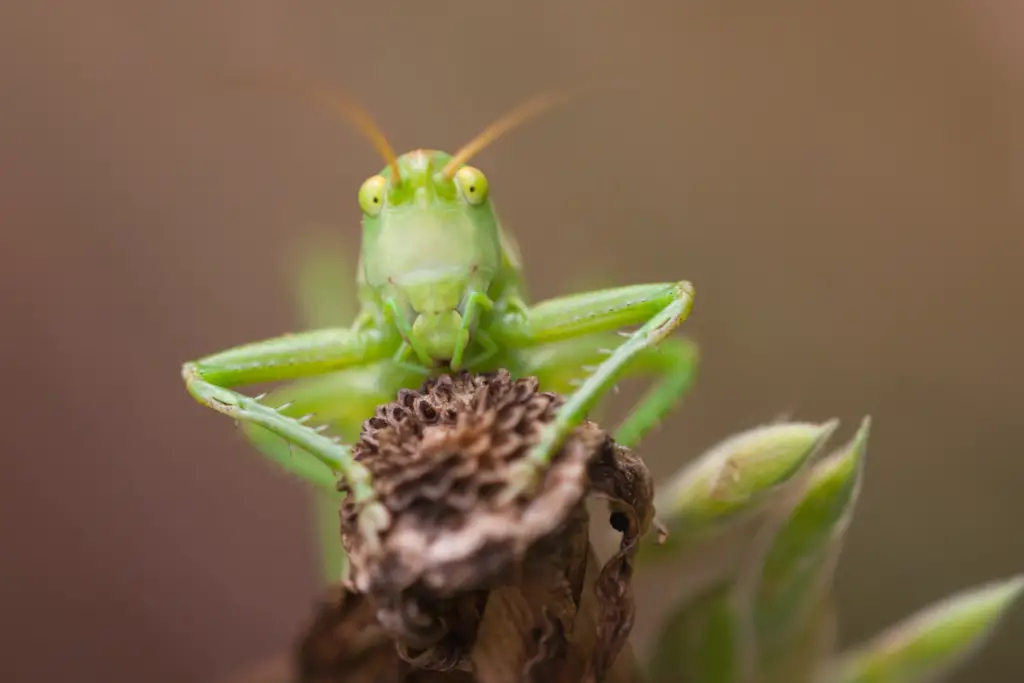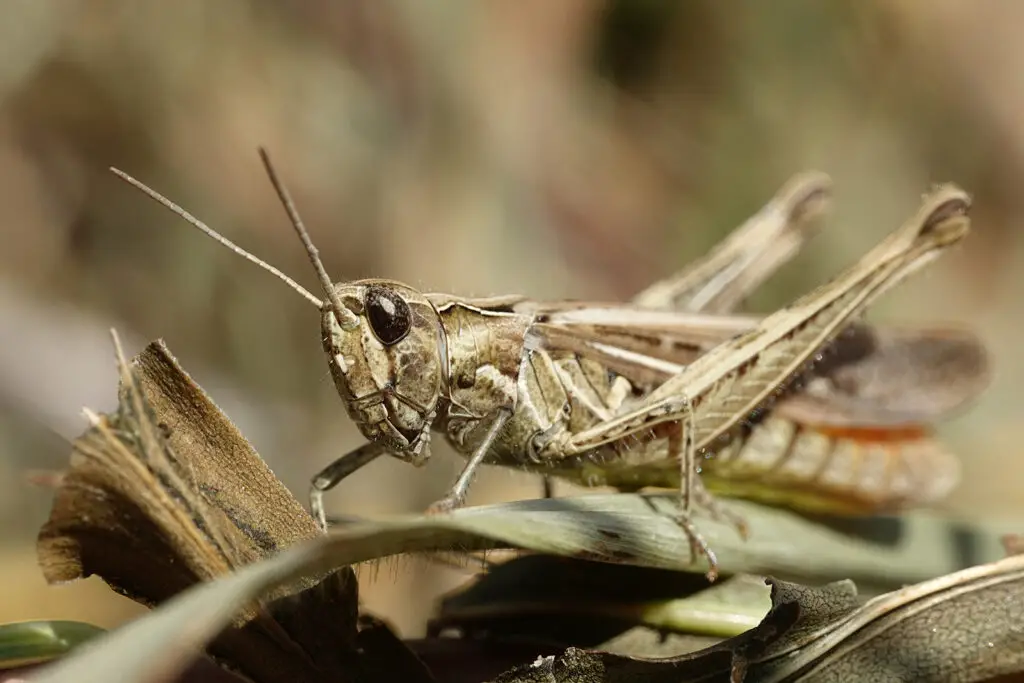
Encountering a grasshopper in the garden is common, but it’s not often that one thinks about being bitten by these jumping insects. Though it’s rare, grasshopper bites can occur, especially if the creature feels threatened. If you find yourself on the receiving end of a grasshopper’s pinch, it’s important to know the proper steps to minimize discomfort and prevent infection.
Grasshoppers have powerful mandibles that can break the skin, leading to redness and minor swelling. The sensation of the bite can be startling, and although it might cause a moment of discomfort, these little hoppers aren’t venomous. Nevertheless, just like any break in the skin, it’s important to care for the area promptly to ensure that it heals cleanly and quickly. Knowing how to treat a grasshopper bite can help keep a simple nip from turning into an unnecessary irritation.
Understanding Grasshopper Bites
Grasshopper bites are rare, but it’s important for you to recognize them and understand the symptoms they may cause.
Identifying a Grasshopper Bite
If you’ve been bitten by a grasshopper, the bite will likely be a small red mark on your skin. Grasshoppers can bite when provoked or handled, and their mandibles have the strength to pinch your skin. Although grasshopper bites are not common, large grasshopper species are capable of biting humans.
Potential Risks and Symptoms
Grasshopper bites are usually harmless and don’t pose any serious health risks. However, you might experience:
- Redness and a slight swelling at the bite site.
- A stinging sensation or mild pain that typically fades quickly.
If you have any unusual reactions, such as severe swelling or pain, it’s wise to consult a healthcare provider.
First Aid Measures
In the unusual event you’re bitten by a grasshopper, prompt cleaning and care can prevent infection and relieve discomfort.
Immediate Actions
- Clean the bite: Gently wash the area with soap and water to remove any debris or irritants the grasshopper may have left behind.
- Reduce swelling: Apply a cool compress or an ice pack to alleviate swelling and numb the pain. Elevate the affected limb if possible to reduce discomfort.
Home Remedies
- Calamine lotion: Applying calamine lotion can soothe the skin and provide relief from itching.
- Hydrocortisone cream: A small amount of 0.5% or 1% hydrocortisone cream helps reduce inflammation and irritation.
Medical Attention
If you’ve experienced a grasshopper bite, monitoring your symptoms is crucial for determining when to seek medical attention.
When to Seek Professional Help
- Swelling that doesn’t decrease after applying a cold compress or ice pack.
- Persistent pain despite taking over-the-counter pain medication.
- Signs of infection such as increased redness, warmth, or pus at the bite site.
- Any allergic reactions, like hives, difficulty breathing, or swelling of the face and throat, are indicators that you should seek immediate medical help.
Prevention Strategies
To minimize the chances of a grasshopper bite, you can employ certain strategies. These include taking steps to avoid grasshoppers altogether and using protective measures to safeguard yourself during potential exposure.
Avoiding Grasshoppers
- Stay aware of your surroundings: Grasshoppers are more prevalent in grassy areas, so when you’re in such environments, be mindful and keep an eye out for these insects.
- Alter your landscape: If your yard is a haven for grasshoppers, consider managing the habitat to make it less appealing to them.
Protective Measures
- Dress defensively: When spending time in grasshopper-prone areas, wear long sleeves and pants to shield your skin.
- Use insect repellent: While grasshoppers aren’t generally attracted by human scent, a repellent could serve as an extra layer of protection.
Frequently Asked Questions
If you’ve experienced a grasshopper bite, you might have questions about its potential effects and the necessary steps to take. This section provides clear answers to common concerns about grasshopper bites.
Can being bitten by a grasshopper have harmful effects?
Grasshopper bites are typically harmless, mainly because grasshoppers are not venomous and their bites don’t usually lead to any serious health concerns. However, the area might become red and swollen for a short period.
What are the typical symptoms experienced after a grasshopper bite?
After a bite, you may experience symptoms like minor pain, redness, and swelling. In some cases, there might be a slight itchiness, but these symptoms are often mild and temporary.
How can I differentiate between a grasshopper bite and other insect bites?
Grasshopper bites are usually less severe than other insect bites and do not result in the extensive swelling, redness, or pain that might accompany, for instance, bee stings or ant bites.
Are there any diseases associated with grasshopper bites?
No, grasshopper bites are not known to transmit diseases. The concern with grasshopper bites mainly revolves around potential allergic reactions, which are rare.
What immediate steps should someone take if bitten by a grasshopper?
If bitten, gently clean the area with soap and water to prevent any infection. If you notice swelling, applying a cold compress can alleviate discomfort.
Is it safe to handle grasshoppers, or can they be poisonous?
Handling grasshoppers is generally safe, as they are not poisonous and pose no serious threat to humans. Still, it’s always best to avoid handling wild insects to prevent bites.
Driven by a passion for those tiny creatures that rule our world, we at Bug Domain strive to be your go-to resource for information on insects.


